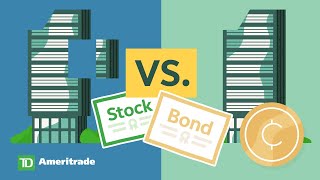When it comes to investing, two popular asset classes that often come to mind are stocks and bonds. Stocks represent ownership in a company, while bonds are debt issued by governments or corporations. Both stocks and bonds have their unique characteristics and can play a crucial role in diversifying an investment portfolio. In this article, we will explore the pros and cons of investing in stocks compared to bonds and provide insights into starting your online stocks trading journey.
Table of Contents
What are Stocks?
Stocks, also known as equities, are financial instruments that represent ownership in a company. By purchasing stocks, you become a shareholder and have a claim on the company’s assets and earnings. Stocks trading in SA can be publicly traded on stock exchanges, allowing investors to buy and sell shares.
Pros of Investing in Stocks:
- Potential for High Returns: Stocks have historically provided higher returns compared to other asset classes over the long term. Although past performance is not indicative of future results, investing in well-performing stocks can generate significant capital appreciation.
- Ownership and Voting Rights: As a stockholder, you have ownership of the company and can participate in corporate decisions by exercising voting rights. This gives you a say in matters such as electing the board of directors or approving certain company policies.
- Dividend Income: Companies often pay dividends to shareholders from their earnings. Investing in dividend-paying stocks can provide a steady income stream, especially for income-oriented investors.
Cons of Investing in Stocks:
- Volatility and Risk: Stocks are subject to market volatility, and their prices can fluctuate significantly in the short term. This volatility can lead to losses if the market experiences a downturn. Investors must be prepared for market fluctuations and have a long-term investment horizon to mitigate risk.
- Lack of Fixed Income: Stocks do not offer a consistent income flow like bonds do. Dividends are not guaranteed, and companies can reduce or eliminate dividend payments based on their financial performance. This uncertainty makes stocks less suitable for investors seeking stable income.
What are Bonds?
Governments, municipalities, or corporations issue bonds as a means of raising capital through debt instruments. Investing in bonds means lending money to the issuer for a specific period. In return, the issuer promises to repay the principal amount with periodic interest payments.
Pros of Investing in Bonds:
- Fixed Income Stream: Bonds offer a predictable income stream as they pay regular interest payments, typically semi-annually or annually. This makes bonds an attractive investment option for those seeking a stable and consistent income.
- Capital Preservation: Bonds are generally considered less volatile than stocks, making them a more conservative investment choice. They provide a fixed repayment date and a known interest rate, which can help preserve capital and provide a sense of security.
- Diversification Benefits: Including bonds in an investment portfolio can help diversify risk. Bonds often have a negative correlation with stocks, meaning they may perform well when stocks experience downturns. Including a variety of investments in a portfolio can lessen the overall fluctuations in its value.
Cons of Investing in Bonds:
- Lower Potential Returns: Bonds usually provide lower returns than stocks due to fixed interest payments and limited potential for capital appreciation. This lower return potential may make it challenging to keep pace with inflation over the long term.
- Interest Rate Risk: The price of bonds is inversely proportional to interest rates. When interest rates rise, existing bonds with lower yields become less attractive, leading to a decline in their market value. Investors in bonds must consider the impact of changing interest rates on their investment’s value.
Start Your Stocks Trading Online Journey
Now that we’ve explored the pros and cons of stocks and bonds, you might be interested in starting your stocks trading journey. With the advent of technology, it has become easier than ever to trade stocks online. Here are a few steps to help you get started:
- Educate Yourself: It’s essential to understand the basics of investing and the stock market. Learn about fundamental and technical analysis, risk management strategies, and how to evaluate companies.
- Choose a Reliable Stock Trading Platform: Selecting a reputable online stock trading platform is crucial. Look for a platform like Banxso – Online Trading Platform that offers user-friendly interfaces, access to research tools and market data, competitive fees, and reliable customer support.
- Open an Account: You will likely need to provide personal information and comply with any regulatory requirements. Transfer funds into your trading account to have capital available for investing.
- Research and Select Stocks: Evaluate their financial health, growth prospects, competitive advantages, and industry trends.
- Start Trading: Place buy or sell orders through the trading platform and monitor your investments regularly.
In conclusion
stocks and bonds are two different asset classes, each with its own set of pros and cons. Stocks offer the potential for high returns and ownership rights but come with higher volatility. Bonds provide fixed income and capital preservation benefits but may have lower returns. As an investor, understanding these differences is crucial in constructing a diversified portfolio that aligns with your financial goals and risk tolerance. If you’re interested in stock trading, explore reputable online platforms and embark on your investment journey with proper research and risk management.












